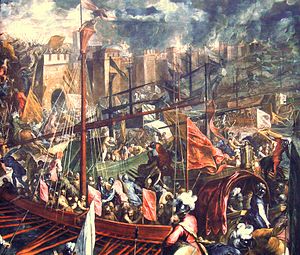Le premier chemin est la condamnation de ses propres erreurs. Commencez par reconnaître vos erreurs pour être justifiés. C’est ce que le prophète dit : « Je t’ai fait connaître mon péché, je n’ai pas caché mon iniquité ; J’ai dit : J’avouerai mes transgressions à l’Eternel ! Et tu as effacé la peine de mon péché. » (Ps 31/32 :5). Ainsi vous condamnez les fautes que vous avez commises et cela suffira pour que le Maître vous écoute. Car la personne qui confesse ses fautes ne craindra plus de les commettre à nouveau.
 Il y a un second chemin qui n’est pas inférieur au premier. C’est de
ne pas garder rancune envers nos ennemis, de surmonter notre colère afin
de pardonner les offenses de nos compagnons car c’est de la sorte que
nous obtiendrons le pardon de la part de Notre Seigneur. Ceci donc est
le second chemin de la conversion. Le Seigneur dit « Si vous pardonnez
aux autres leurs offenses, votre Père Céleste vous pardonnera aussi »
(Mathieu 6 :14).
Il y a un second chemin qui n’est pas inférieur au premier. C’est de
ne pas garder rancune envers nos ennemis, de surmonter notre colère afin
de pardonner les offenses de nos compagnons car c’est de la sorte que
nous obtiendrons le pardon de la part de Notre Seigneur. Ceci donc est
le second chemin de la conversion. Le Seigneur dit « Si vous pardonnez
aux autres leurs offenses, votre Père Céleste vous pardonnera aussi »
(Mathieu 6 :14).Voulez-vous connaître le troisième chemin de la conversion ? C’est la prière fervente et attentive dans le fond de votre cœur…
Le quatrième chemin est celui du don (des aumônes)…Ce chemin possède une puissance considérable…
Et puis il y a (le chemin de) la modestie et de l’humilité qui ne sont pas des moyens inférieurs pour déraciner les pêchés. Nous avons le publicain comme exemple : il ne pouvait pas proclamer ses bonnes actions, cependant il les a remplacées par l’offrande de son humilité et ainsi il déposa le lourd fardeau de ses fautes…
Nous vous avons indiqué cinq chemins de conversion….aussi ne restez pas inactifs mais utilisez ces cinq chemins tous les jours. Ce sont des chemins faciles et vous ne pouvez utiliser votre impuissance comme prétexte pour ne pas les emprunter.
Voir aussi
Saint Jean Chrysostome sur le mariage
St John Chrysostom the archbishop of Constantinople
L’Eglise Orthodoxe à La Réunion
Théosis (déification)
Travelers on the Way to the Light












